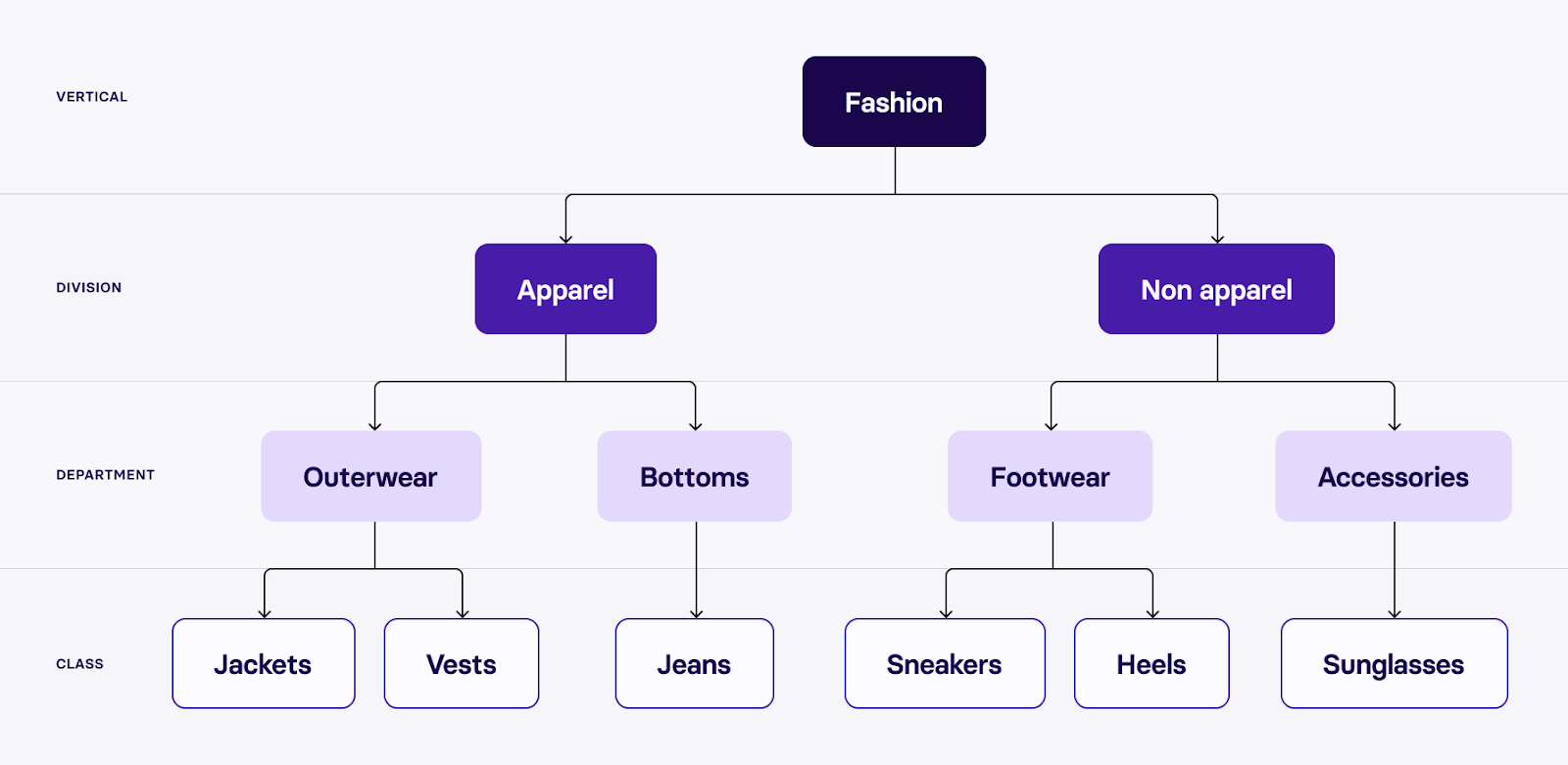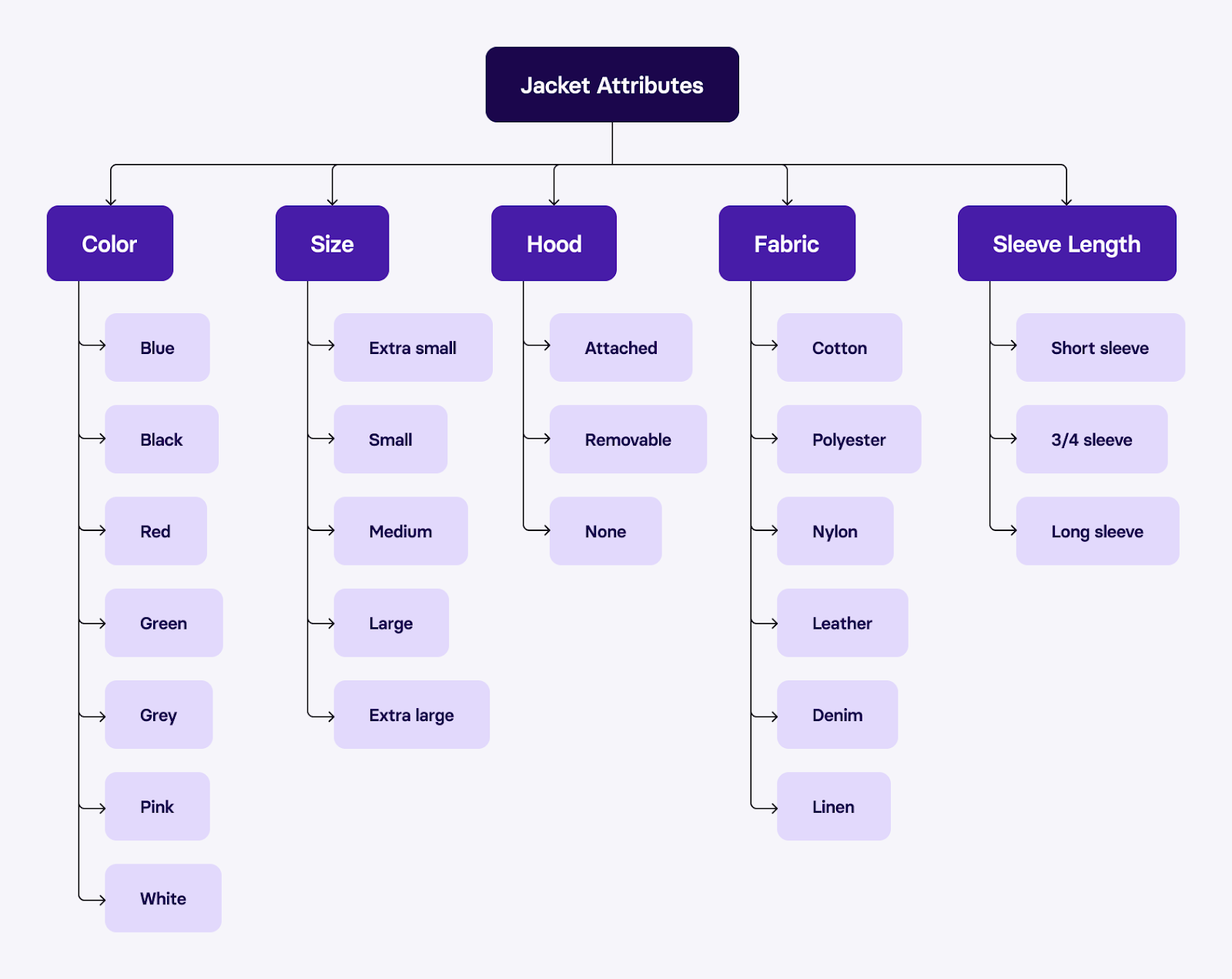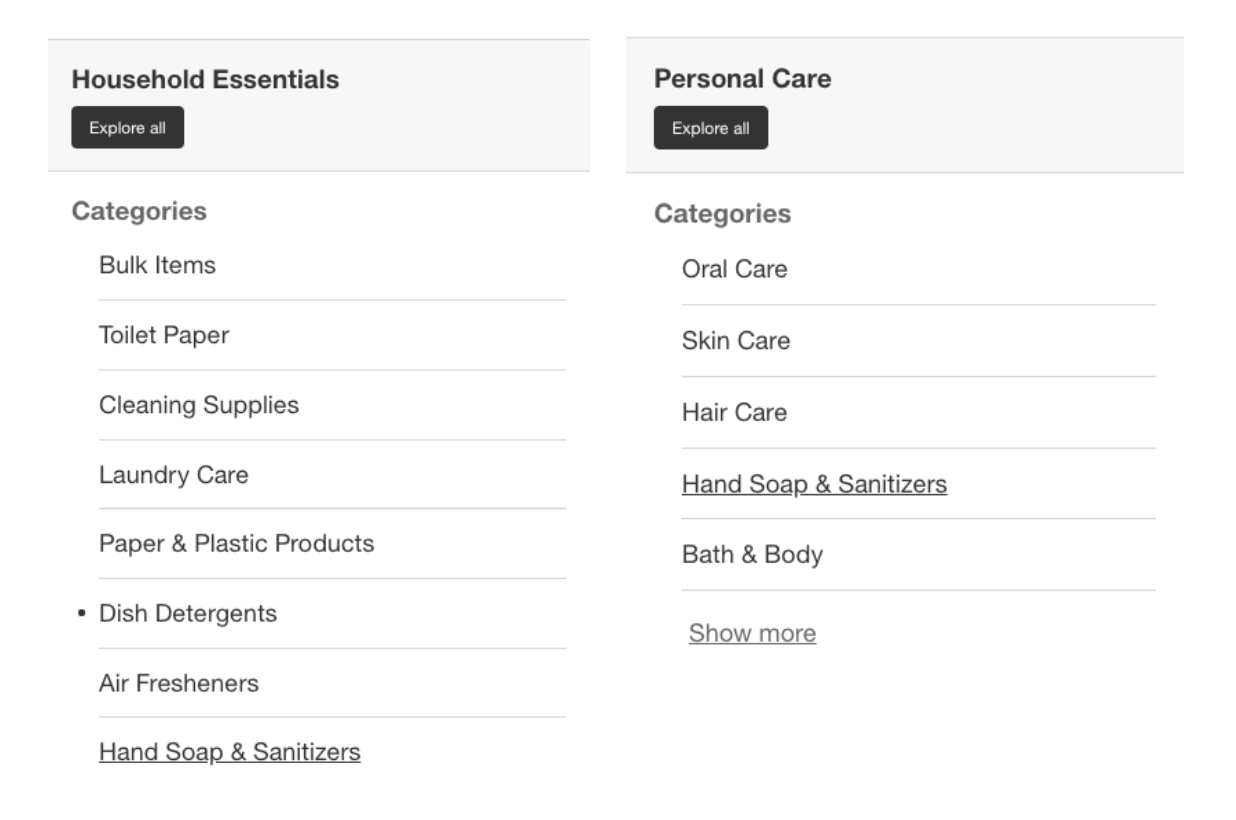Product Taxonomy: Improve Sales with Effective Categorization
A clear and comprehensive product taxonomy enables your customers to find exactly what they need to complete their checkout. Learn how to construct the ideal product taxonomy with this guide.

Imagine walking into your local supermarket. You’re there to buy supplies for the week, and the first item on your shopping list is toothpaste. You immediately see signs which direct you to the Health & Beauty department. After turning into the first aisle, you find all of the different toothbrushes for sale. You continue to browse the area and locate the available toothpaste options on the next shelf. You quickly select the brand you are looking for, place it in your cart, and move on to the next item on your list.
This is an example of an ideal outcome made possible by excellent product organization. As the customer, you understood how to navigate the store and find the item you were looking for easily.
While the scenario above focused on a brick-and-mortar store, the same principles apply in ecommerce. A clear and comprehensive product taxonomy enables your customers to find exactly what they need to complete their checkout. It also encourages brand loyalty and customer trust.
What is a product taxonomy?
A product taxonomy describes a system of organization—essentially, how to name, define, and classify groups of products together based on shared characteristics.
There are two main parts of a product taxonomy:
1. The category tree (also known as the product hierarchy)
This groups products by form and function in a set of ordered categories. The hierarchy is structured top-down, and defines the relationship between the various product groups at different levels.
At Carted, we have four levels in our hierarchy: Vertical, Division, Department, and Class.

2. The product attributes (also known as facets or dimensions)
Each attribute applies to several categories and has various values. Attributes can be combined and used as filters when searching for products.

To present products in a logical way to customers, it’s important to understand the relationship between categories and attributes. Categories define the item, while attributes describe the item.
The goal of any taxonomy is to organize all available information so that customers can find what they want in the least clicks possible. The end result is that customers can move easily through all levels, applying appropriate attribute filters as they go.
It’s common for companies to have two category trees—one for their internal use (for example, reporting and personnel structure) and another that is customer-facing (for example, on a website).
There are a few differences between internal and external category trees. Within the internal category tree, a product will only be located in one category. On a company’s website, a product might be shown in several categories. This is to increase its visibility to customers and to address how different customers may search for products. In addition, the website categories are often changed based on product performance and trends.

Why is a product taxonomy necessary for customer satisfaction?
Your bottom line is at risk if product data is not properly categorized. “Poorly architected” ecommerce sites sell 50% less than better organized sites. Where searches failed to produce desired results, roughly half of customers gave up without trying a second time. After a poor search experience, customers are highly likely to exit a site and never return.
A product taxonomy is the only way to make sure your product information is accessible and usable. When data is structured and indexed in a taxonomy, customers can find what they need by working down to more specific categories, up to a more inclusive theme, or sideways to related products.
This is helpful for both types of customers out there: searchers and browsers. “Searchers” know exactly what they are looking for. They use the homepage search bar, typing in specific keywords like ‘red miniskirt’ or ‘Apple phone charger’ to locate the product they want. The taxonomy allows for a search to return the correct product results.
“Browsers” are eager to explore products using headers, menus, and navigation bars. A well-organized product taxonomy allows this type of customer to quickly find something they might buy, as all available products are located in the right place.
A clear product taxonomy helps prevent customers from having a poor experience with your brand.
Organizational benefits of a well-designed taxonomy
Designing an effective taxonomy is a lot like designing a highway system, or a system of roads. You must consider the different pathways your drivers, or customers, will take in getting to their final destination.
Great road systems have clear signage and are well-maintained, allowing for a smooth ride. Poor ones lead to user frustration, unnecessary detours, and in the worst instances, accidents.
Much like a highway system, a well-designed taxonomy equals major benefits that stretch beyond a single customer’s journey and impact the entire organization.
Increased conversion and sales
Product classification and intuitive search are key to driving a great experience and a high conversion rate. A customer will always feel more confident when navigating through a clear and concise set of categories rather than digging into a mess of badly classified products. In addition, a well-built taxonomy helps customers discover similar or adjacent products, which in turn boosts your average order value (AOV).
Better reporting and decision-making
A well-designed taxonomy plays a big role in internal decision-making. Strong reporting and analytics are necessary to understand which products are selling and which are not. Distinct categories and correct labeling make delivering accurate statistics across a full product catalog much easier. The better your data and more reliable your reporting, the easier it is to fully assess and make decisions about the business.
Improved communication and productivity
By establishing common terminology and structure, a taxonomy encourages better communication in and out of the organization. A clear taxonomy also enhances productivity and customer service by allowing employees to find product information efficiently.
Taxonomy at the center of commerce
Product taxonomy is a key contributor to retail success. Taxonomy influences every player in the commerce ecosystem, from manufacturers to merchants to customers. Proper categorization and attribution enable your customers to discover products they are looking for with as little effort as possible. In addition, it promotes efficient business processes and decision-making.
A strong taxonomy results in a long-term competitive advantage that makes your search and browse experience stand out from others in the market. This is important to keep in mind as you build your own product classification system.

